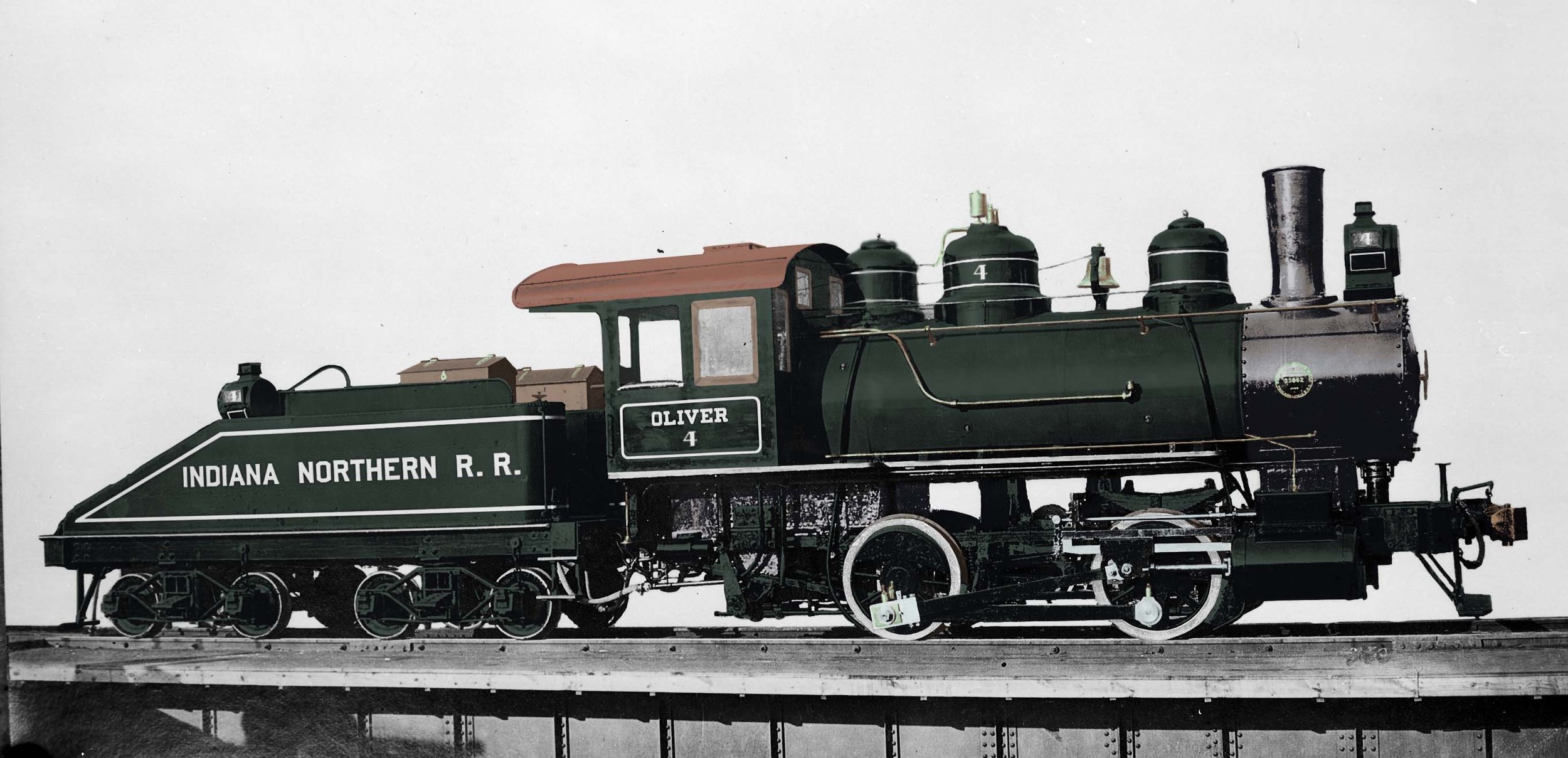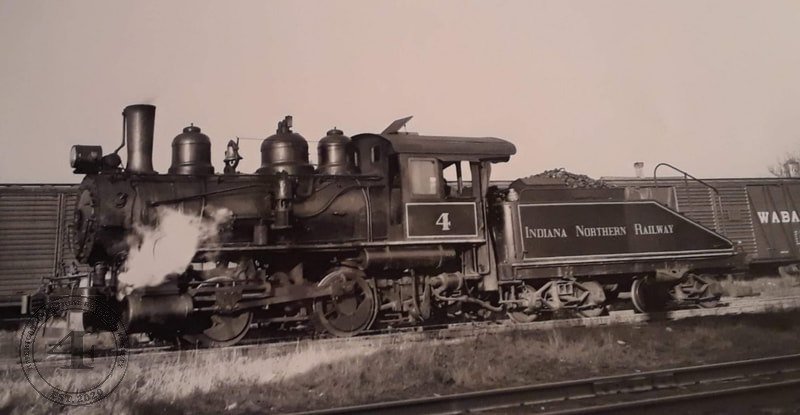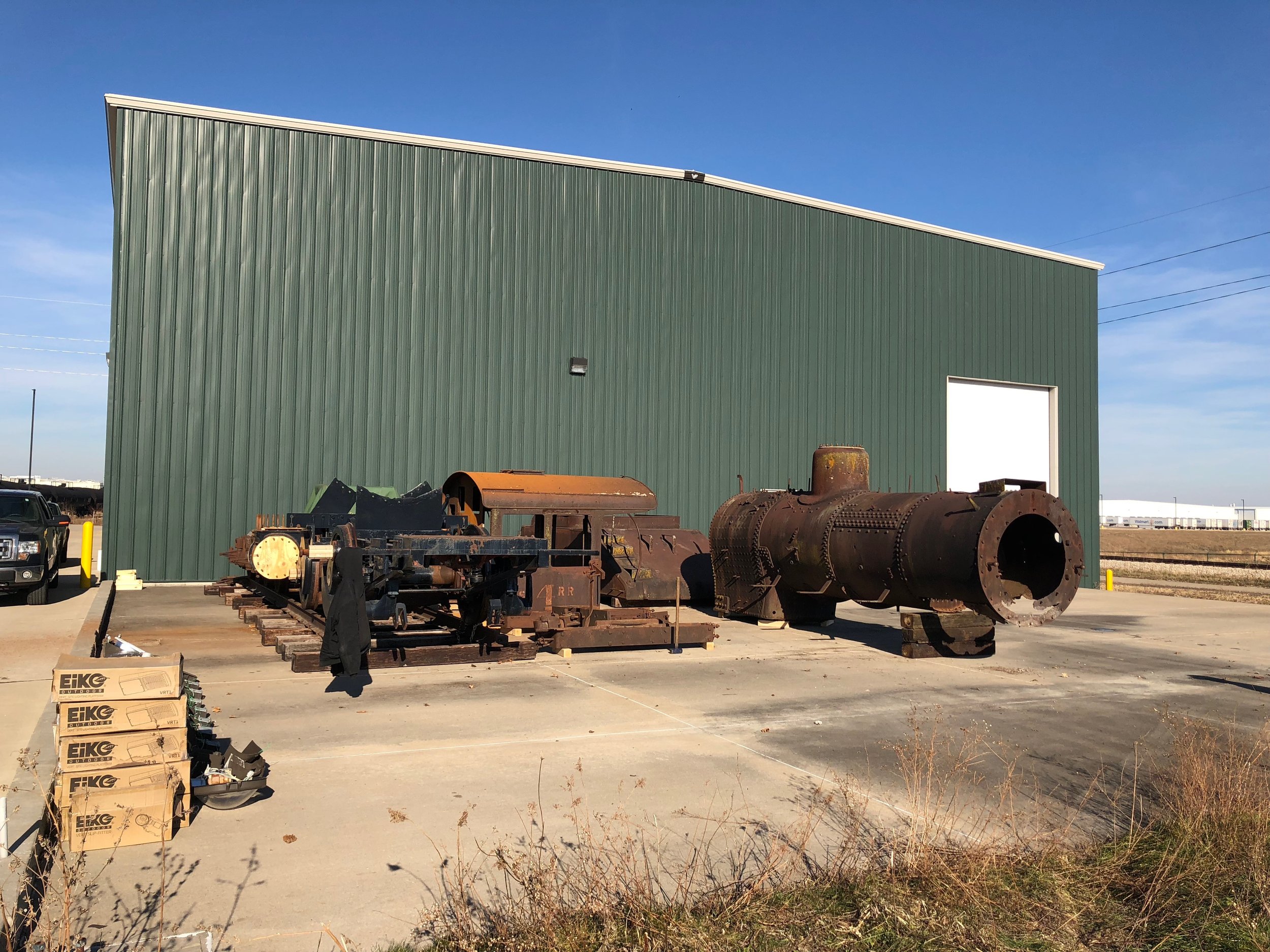
Indiana Northern #4- The Centerpiece of Our Collection
From South Bend to the Missouri Hills, Our Engine Tells Quite a Story!
The Indiana Northern Railroad was founded in 1893 for one purpose - moving freight. As was the case with many industrial railroads, the Indiana Northern was only a couple miles long and served a number of diverse customers along its tracks. Located in South Bend, Indiana the small but bustling railroad most notably served the Oliver Chilled Plow Works, Studebaker Automobile Company & Wilson Bros. Shirt Factory. Business was good - so good in fact that additional power was needed to keep up with demand. So, in 1913 a rather unremarkable steam locomotive was bought new from the Baldwin Locomotive Works of Philadelphia, Pennsylvania and shipped to South Bend. A standard gauge and tender equipped 0-4-0, the engine now known as Indiana Northern #4 fit in well at its new home. Designed for pulling power and an ability to perform well in congested yards and around tight curves, the engine was well suited to the service it was placed into -working in obscurity and notable perhaps only for its olive green paint, aluminum striping and kerosene lights.
But by the end of WWII, times had changed. At this point the engine sported only a utilitarian coat of black paint and standardized electric lighting - the original Edwardian accents from decades ago destroyed. In 1948, steam power came to a close on the Indiana Northern. Both #4 and #5 - a chunky 0-6-0 running mate - were replaced by a single NW2 diesel locomotive. Still being in reasonable mechanical shape, it was decided to offer the #4 for resale instead of scrapping. This culminated in it being brought to Pacific, Missouri - a small rural town located just west of St. Louis along the Meramec River. Known to history by many different names across many owners, the Denton Sand and Gravel Co. used a steam clamshell to scoop both sand and gravel from the bed of the Meramec River. From there, the material would be loaded into railroad cars and shoved to an interchange with the St. Louis - San Francisco Railroad more famously known as ‘The Frisco.’ Engine #4 was the motive power for this operation until 1960 - when after repeated abuse, lack of maintenance and a blown cylinder head the locomotive was again replaced by a diesel.
No longer of use, the diminutive and now completely worn-out engine was pushed to the end of an overgrown stub track and forgotten. When the operation folded in 1967, #4 was left behind - abandoned and buried up to its drivers in gravel. Many tried to extract the engine from its resting place, but were quickly overcome by the daunting realities of this task. All except for one local man - Mr. Jim Kimmel, the engine’s first savior. In February of 1982 Kimmel purchased #4 for $1,000 and was given 30 days to remove his purchase out of the frozen gravel pit. Many said it couldn’t be done, as several individuals has previously tried and failed to move it. Yet only two weeks later, it was done! Kimmel placed the engine on an old siding in town, and began picking away at his new project. This was made easier because of Kimmel’s involvement with Frisco #1522, a 4-8-2 ‘Mountain’ steamer running mainline excursions in the area around this time.
But by 1992, Kimmel had come to the realization that #4 required a better home than he could offer and made the decision to sell his locomotive. Dave Miner - owner of the Fort Madison, Farmington & Western Railroad - saw this as an opportunity. Miner had been looking for a steamer that could be the crown jewel of his collection and #4 fit the bill. Relocated again to Donnelson, Iowa Miner wasted no time in beginning the restoration. He completely disassembled the locomotive, having the running gear rebuilt and commencing many other mechanical tasks. Unfortunately, the rebuild was never completed due to the untimely death of Mr. Miner and failure to sell at the subsequent estate sale. Once again in limbo, #4 languished.
That is, until 2008. The Maynard Family of Aledo, Illinois had been working to revitalize their small hometown into a tourist destination. To do so, they had been acquiring and restoring old buildings in town - things such as a turn of the century theater, fire station, drug store and wooden Chicago, Burlington & Quincy Railroad depot. No depot is complete without a train, so the Maynards purchased #4 with the intention of re-assembling it into a static display. Once again, though, these plans did not materialize and instead #4 sat as a jigsaw puzzle exposed to the elements until the summer of 2020.
It was then that a small group of preservationists learned the old wooden depot in Aledo was for sale, and discreetly asked if any of the railroad equipment out front could be bought separately. What followed was a lightning-speed fundraising campaign and relocation project which ultimately culminated into the formation of AIRS. Now relocated and stored at a secure facility near Davenport, Iowa the restoration work on Indiana Northern #4 has commenced.
Although the path ahead will be long and arduous, AIRS is eager to see #4 in steam once again. This unassuming and once prolific style of engine served as the true backbone of America - working largely unnoticed and never receiving the same recognition or praise that its mainline peers did. In the preservation era, #4 will be able to show others the power of steam and prompt the sharing of industrial railroading’s forgotten past. What’s more, AIRS intends to do this in a unique way - by restoring #4 to operation in its original 1913 appearance of olive green and aluminum paint with kerosene style lighting to join the growing resurgence of Edwardian-styled locomotives in the United States.
But we can’t do it alone. To help tell the forgotten story of America’s industrial past, please consider donating to the restoration of Indiana Northern #4!












